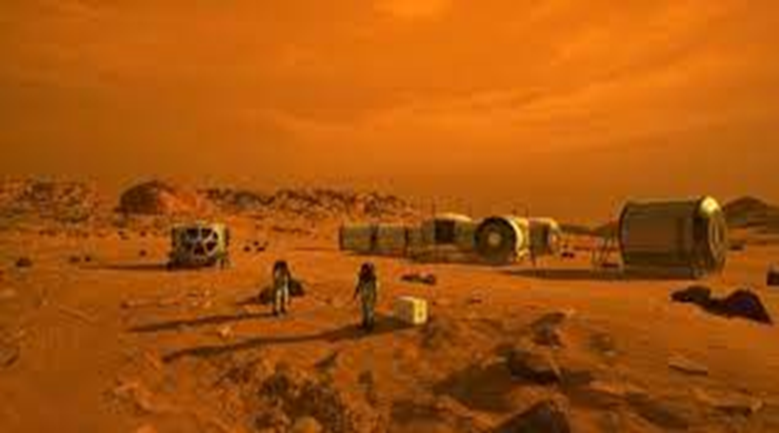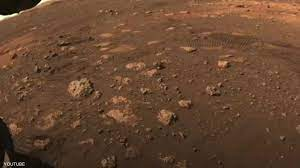A Study Reveals The Effect Of Living On Mars On The Human Body

A new era of spaceflight has dawned with NASA's "Artemis" program, which aims to establish a base camp on the moon and lay the groundwork for a future trip to Mars.
The US space agency will return humans to the surface of the moon in 2025, but its manned missions to the red planet will not take place before 2030.
Meanwhile, billionaire businessman Elon Musk believes he can beat NASA by sending manned missions to Mars in the second half of this decade.
The problem is that conditions on Mars can severely damage multiple parts of the body, accelerating disease and death - even with a space suit on.
From cancer-causing radiation to thinning muscles and weak bones, this is why being on Mars is so risky, according to experts.
radiation
It is well known to scientists that Mars has an incredibly thin atmosphere - about 0.6% of Earth's - which means that it is constantly exposed to intense galactic cosmic radiation and solar protons.
Any human being on its surface would be exposed to this intense rate of harmful radiation, and run the risk of cancer, cardiovascular disease, brain damage, “cognitive decline” and much more.
NASA estimates that during a six-month trip to Mars, astronauts will be exposed to 300 millisieverts of radiation — the equivalent of 24 CAT scans — before they reach the planet.
“Because astronauts will be exposed to these radiation levels for a longer period than passengers or pilots on transatlantic flights, this is a significant exposure,” said Robert Wimmer-Schoengruber, from the University of Kiel, Germany. We humans are not made to withstand space radiation.”

According to a 2019 study led by the European Space Agency, Mars astronauts can be bombarded with radiation equal to 700 times the radiation they are exposed to on Earth.
The areas of the body most susceptible to cancer from cell mutations include the eyes, lungs and intestines, as well as the breasts and uterus for women.
And a 2020 study found that astronauts would be exposed to radiation 2.6 times more than they would be exposed to on the International Space Station, increasing their risk of cancer and infertility.
Other studies have shown that radiation also damages the brain by impairing learning and memory capabilities, and can leave astronauts disoriented and unable to make decisions. Cosmic rays, such as iron and titanium atoms, do severe damage to the cells they pass through due to their very high ionization rates.
“Exploring Mars will require missions of 900 days or more, and involve more than one year in deep space, where exposure to all the energies of galactic cosmic rays of heavy ions is inevitable,” said Francis Cucinota, a physicist at the University of Nevada at Las Vegas.
A study published last year stated that "there are still limitations in understanding the effects of space radiation."
gravity
Microgravity is a serious problem for astronauts during long-term spaceflight, as it reduces bone density, increases the risk of bone fractures, and deteriorates muscle performance.
And in space, the lack of gravity means that muscles hardly need to be worked and that astronauts have a vigorous exercise routine to prevent them from losing large amounts of muscle mass.
On Earth, every time a person sits or stands, gravity pulls blood into their legs. The work the heart does to keep blood flowing as it fights off Earth's gravity helps it maintain its size and function.
Removing the effects of gravity leads to a decrease in the performance of the heart, and its steadily shrinking, according to a 2021 study.
Microgravity is also thought to increase fluid pressure inside the head, possibly at the back of the eyes, which could damage vision.
Furthermore, since astronauts work in a weightless environment, very little muscle contraction is needed to support their bodies or move around.
Without regular use and exercise our muscles weaken and deteriorate, while the bones no longer have to support the body against gravity, they also weaken.
And a 2021 study found that even a long-term program of low-intensity exercise in space is not enough to counteract the effects of prolonged weightlessness on the heart.
Mars dust
On Mars, frigid, arid conditions average -80 degrees Fahrenheit (-63 degrees Celsius) at mid-latitudes, making the Red Planet seem inhospitable to life.
But the rocky surface is also covered in extinct volcanoes, canyons and debris, with regular meteor impacts posing a constant danger to any future colonists. Anyone visiting Mars will spend all of their time indoors, or inside a spacesuit breathing recycled air if they're outside.
But even in doing so, they would run the risk of pervasive Martian dust entering and polluting airways.

Moreover, perchlorate, a type of chemical compound, is known to exceed toxic levels in Martian dust and soil.
Carl K. said: "Perchlorate is thought to have its toxic effects in high doses by interfering with iodine uptake by the thyroid gland," says Winter, a toxicology researcher at the University of California, Davis, in California.
Inhibition of iodine absorption can lead to a decrease in the secretion of thyroid hormones responsible for controlling growth, development, and metabolism.
Malnutrition
Aside from all the atmospheric and environmental issues of Mars itself, another problem is the potential food shortages and resulting malnutrition.
And an abundance of carbon dioxide (CO2) might be ideal for plant growth—if it weren't for a lack of sunlight, water, and radiation.
Nighttime temperatures of almost -73 degrees Celsius mean crops are destroyed outside the hot growing chambers - just like in the 2015 movie The Martian starring Matt Damon.
Although the diet on Mars barely meets the body's needs, there are promising signs that humans could at least eat enough to survive.
Last year, researchers found that alfalfa - a plant in the legume family - grows well in volcanic soil that mimics Martian regolith.
On Mars, alfalfa can be grown and then composted to help grow turnips, radishes, lettuce, and more.
All in all, the common dangers of Mars mean that a mission there may be appropriate only for the most enthusiastic astronauts—those who don't mind giving their lives to further human spaceflight.
Elon Musk has already said the trip there is "not for the faint of heart" and brings a good chance of dying - but "it would be pretty cool if it works".
Ultimately, Musk wants to make human life "multiplanetary" - living on several planets - which would require about 1,000 Starship launch vehicles.
He believes that a natural or man-made catastrophe will eventually spell the end of civilization, necessitating a move to another planet — Mars being the only realistic option.
This could be an epidemic worse than “Covid”, which leads to a continuous decline in birth rates, or perhaps a direct hit by a deadly comet that “wipes out a continent”.
Despite their separate efforts to reach Mars, NASA and SpaceX are also working together.
NASA has contracted with SpaceX to use Starship to deliver astronauts to the lunar surface as early as 2025, as part of the Artemis program (the successor to the Apollo program in the 1960s and 1970s).
The “Artemis” missions aim to return humans to the moon “no later than 2025.”

Artemis 1, the first "Artemis" mission, which took an unmanned rocket around the moon and back to Earth, was successfully conducted in December.
Artemis 1 will follow a human flight around the moon in Orion in 2024 (Artemis 2) and the first woman and first person of color to land on the moon in 2025 (Artemis 3).
Source : websites

